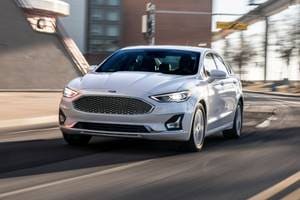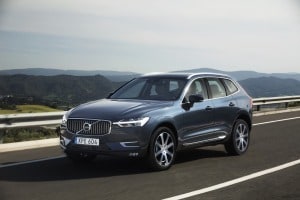Edmunds.com Maintains 2012 Forecast of 14.4 Million New Vehicles

General economic conditions may be shaky but the auto sales recovery continues to progress and Edmunds.com is maintaining its 2012 forecast of 14.4 million. Consumers bought 1.28 million new cars in August, the third highest monthly total so far this year. With a seasonally adjusted annual rate (SAAR) of 14.5 million, August became the seventh month this year (excluding May) with a SAAR of at least 14 million.
This sales strength began with a larger release of pent-up demand in the first quarter than originally expected, leading Edmunds.com at that time to raise its initial forecast of 13.6 million to 14.4 million. Edmunds.com expects the current strength in new car sales to continue for the rest of the year, even in the face of continued downside risk from national and global economic and political uncertainty dampening consumer confidence. Consumer willingness to buy new cars should continue to benefit from loosening credit conditions and moderate income growth for the rest of the year. Plus, the need to replace aging cars will push consumers back to the market, while the enticing new product and creative incentives will pull them there. And, increasing competition among automakers could result in increased incentives for at least some consumers.

Little Change in Market Conditions
August sales showed typical seasonal effects, closing the summer on a stronger note than June and July, but falling short of the higher volumes in March and May. Still, many of the same factors that have driven sales this year continued to figure prominently and spur the release of pent-up demand. Expanding credit conditions resulted in better terms for many auto loan borrowers and allowed consumers who had been shut out by cautious lenders during the recession back into the market. A need to replace aging vehicles — with the average age of the fleet at a record eleven years — pushed consumers to buy, while replenished inventories and all-new models in popular segments created a strong pull. Edmunds.com expects these factors to support sales momentum through at least the end of the year.
Similarly, the same key factors exerted a drag on sales growth and should continue to do so. Uncertainty about economic and political conditions at home and abroad troubled consumers, dampening consumer confidence. At this point, very little progress has been made toward decreasing uncertainty: the fiscal crisis and recession in Europe continue to deepen, Chinese growth is still waning, the U.S. presidential election is still two months away with no clear front-runner and Congress has yet to come to any agreement on what to do about any of the expiring tax rates and benefits collectively comprising the "fiscal cliff." Most importantly, the U.S. economy continues to sputter along producing a steady stream of contradictory indicators and as a result, providing little comfort to those looking for signs of a robust recovery.
Rising Gas Prices Threaten Confidence, Not Auto Sales
Gas prices jumped sharply in August, increasing from $3.57 during the last week of July to $3.84 during the last week of August. Consumer concerns about higher gas prices contributed to lower consumer confidence in August, after confidence had shown signs of reviving in July. While lower confidence usually translates into fewer auto sales, higher gas prices have been found to have little effect on total car sales. Rather, strong sudden increases in gas prices result in a shift in the mix of vehicles purchased as consumers turn to smaller, more fuel efficient vehicles. Early results on the mix of sales in August indicate an unseasonably strong month for smaller cars — e.g., the compact Chevy Cruze and the plug-in hybrid Chevy Volt both had their best sales months ever with nearly 26,000 and over 2,800 units sold, respectively.
Recent Sales Weaker than Expected
Sales are currently on track to total just over 14.3 million for the year. If this pace continues, auto sales would grow 12 percent in 2012, following year-over-year growth of 11 percent in 2010 and 10 percent in 2011. While such growth would be the highest of the recovery to date, it still falls slightly short of the 13 percent growth projected by Edmunds.com's forecast of 14.4 million. What's more is that this shortfall has emerged in the past two months, despite August sales strength. Sales in January through March averaged 8.5 percent above Edmunds.com's initial projections but benefited from the last batch of recovered "lost" sales from the 2011 shortages and from "pulled-ahead" sales due to unusually warm winter weather. As a result, Edmunds.com's updated forecast assumed a more modest lift (5 percent) over initial projections for the rest of the year. Sales in April through June averaged 6 percent above initial expectations. Sales in July and August, however, averaged just 1 percent above initial expectations.
This recent trend warns of downside risk to Edmunds.com's forecast of 14.4 million. But, despite this apparent slowing, Edmunds.com continues to expect sales of 14.4 million for the year. Sales should receive a boost from a strong year end in which deal-seekers once again respond to messaging about end-of-the-year sales events. This year, more actual deals could be available to consumers as competition heats up among automakers, who are all unhindered for the first time in years by internal financial problems or natural disasters. While traditional incentives such as cash-back and lease subventions have not increased substantially at this time, more consumers are qualifying for 0 percent APRs, and automakers and dealers have increased their use of non-traditional incentive programs, such as stair-step incentives. With some automakers increasing production (e.g., Ford) and all automakers looking to gain market share, chances are good that competition will intensify this fall and winter, supporting sales momentum.
Lacey Plache is the Chief Economist for Edmunds.com. Follow @AutoEconomist on Twitter.















